#maya culture
Text
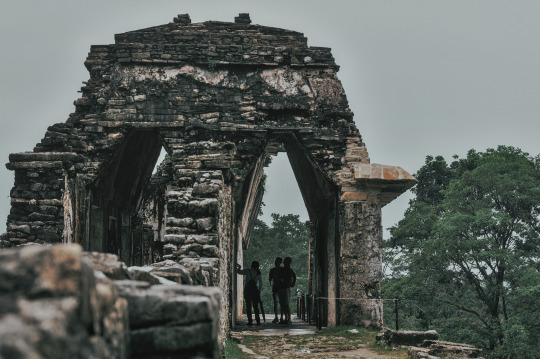
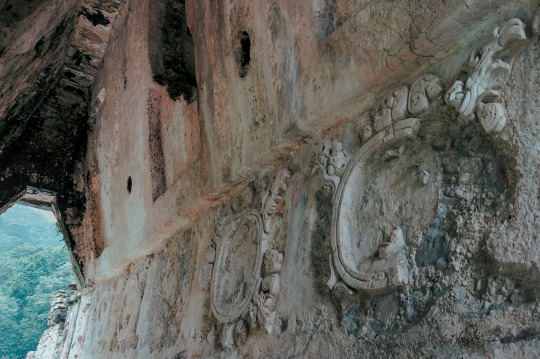
Watching maya bas-reliefs - Palenque, 2014
#picofthenight#travel#mexico#original photographers#photographers on tumblr#ancient architecture#mayan civilization#ancient ruins#maya culture#ancient temple#photoofthenight#basrelief
42 notes
·
View notes
Text
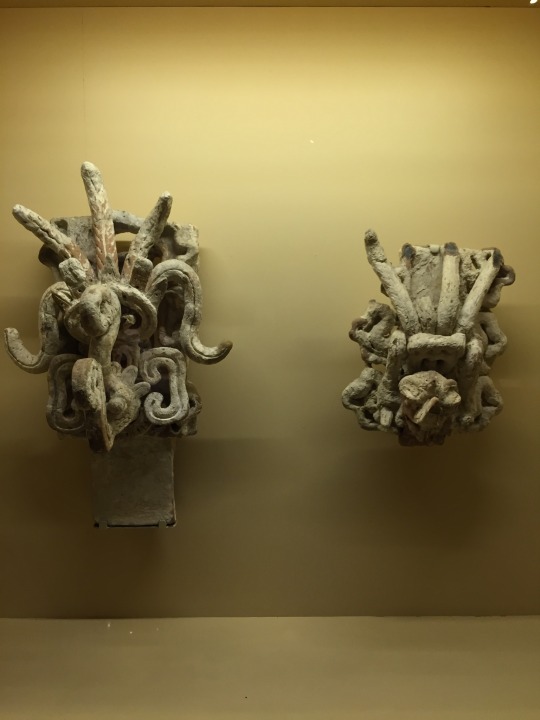

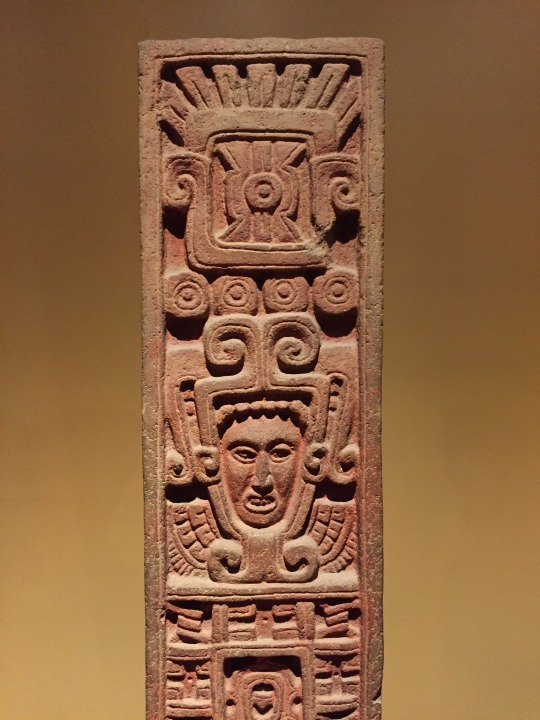


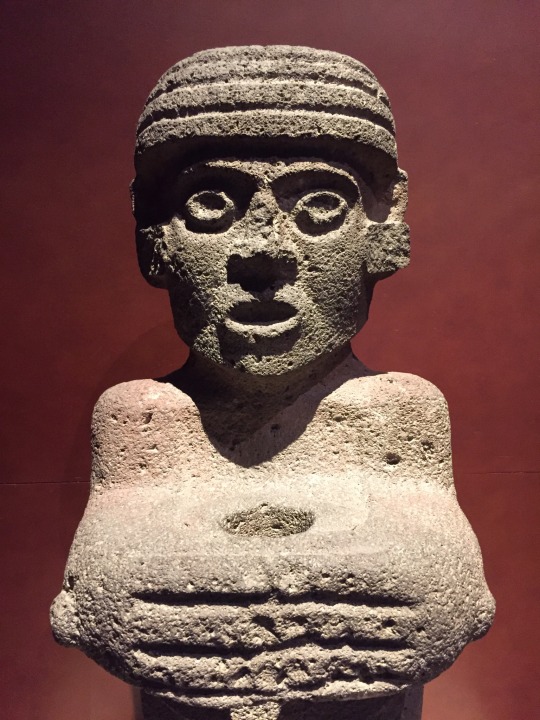

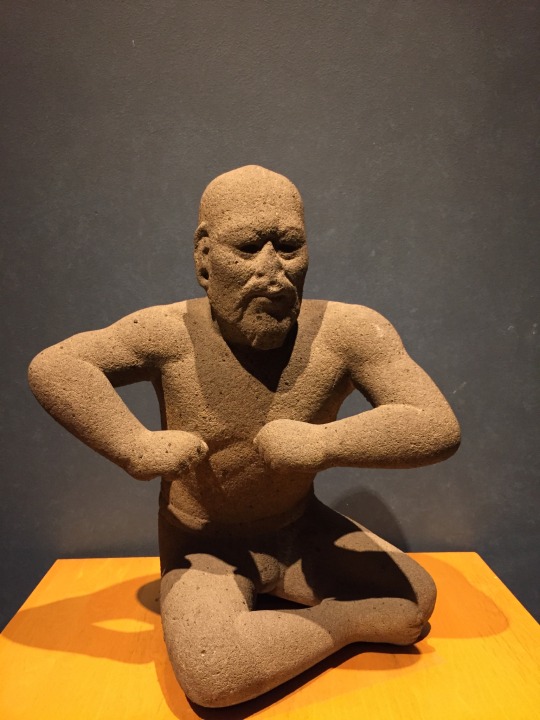

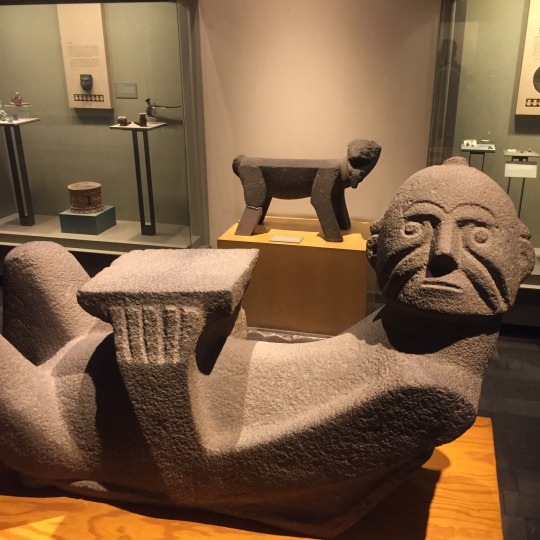
Civilizaciones antiguas de México
Ciudad de México, julio 2022
#mexico#méxico#mexico city#cdmx#maya culture#maya#olmeca#azteca#aztec#antropologia#zapoteco#zapotec#sculpture#mexicanart#artemexicano#handcrafted#civilization#aztec mythology#aztec empire#museo#museum
76 notes
·
View notes
Text
For #Woodensday:
K'iche' Maya animal dance masks on display at Penn Museum:


1. Jaguar, Deer, Bull, Monkey
c.1960, wood, pigment, hair, deer antler.


2. Bull, Coyote, Boar x 2
c.1960-80, wood, pigment, hair, deer antler.
“Maya masks perform origin stories, connecting humans and supernatural beings. Monkey masks, used at festivals, recall a K'iche' Maya story of twin brothers turned into monkeys. Deer, jaguar, and boar masks are worn to perform an ancient deer hunt. In the Dance of the Cowboy, bull masks are used to satirize the Spanish bullfight.”
#K'iche' Maya#Maya#Indigenous American art#Indigenous art#20th century art#1960s#1970s#1980s#mask#dance mask#wood art#Maya culture#jaguar#deer#bull#monkey#coyote#boar#Penn Museum#museum visit#Woodensday#animals in art
17 notes
·
View notes
Text
The Xtabay

The Nightmare of the PacYucatan Peninsula (Pacxico).
"The Xtabay is a seductive but mortal spirit who is mostly of the times sit under the shadow of a Kapok tree combing his long and soft hair waiting for her next pray, attracting any drunk who walks on her territory to seduce them to then disappear them or kill them using her Hair tips to drag they into a lake to then drown them."
Legend
This legend starts in a old town in PacYucatan where 2 beautiful women lived there, 2 Sisters: Xkeban and Utz-Colel.

Xkeban even being a little promiscuous she was kind, caring and affectionate with others and of course the animals.
Utz-Colel was the opposite of her sister, rect, cold, cruel and of course she didn't liked people and felt gross for animals.
Because of her promiscuous attitude, Xkeban was mostly judged in a bad way for the town people an exception of the sick one which She cared about them while Utz-Colel was respected for the people of the town considering her a good example.
Without a warning and in a still mysterious way, Xkeban died but the town took too long in notice until everyday they passed around her home, there was a very sweet smell, when someone find Xkeban's body as Disney Princess Her corpse was surrounded and cared by the animals Xkeban loved in live. in the Funeral less people of the town assisted an exception of the person who were grateful for Xkeban's kindness and of course her Sister who instead of feeling bad she just mocked and said
"If this Corrupted sister of mine have died and released a good smell, when I die, i would smell even better than her"
In that same moment a lot of flowers in special Xtabentun born in Xkeban's grave.
And in the next day Utz-Colel died, and of course the town assisted instantly to her funeral but the strange thing is that her corpse was releasing an awfull smell.
In Utz-Colel's grave a Tzacam flower born from it, in that form Utz-Colel started to reflect about what did she do wrong if she was doing the things correct.
"If that promiscuous won the Heaven, then i most be even more promiscuous too"
Since that Utz-Colel started to sleep with the bad spirits to finally manage to go back to the earth but now turned into the Xtabay.
Xtabay saw the advance of the people around the world so she easily adapted to any ambient to cheat the living ones and inspire horror
Personality
She is seductive, cold, cruel, Sadic, sarcastic, drunk, bloody, remorseful but she can be a little pervert specially with men.
Powers
-Teleport
- Her hair tips can turn into spiked vines to hold her prey, hurting them with the spikes i. The process.
- Release strong Aphrodisiac smoke (Only works in fully developed teens to old adults): this effect will last to almost 3-6hours
- Hypnosis (Only works in Men)
- Shapeshift (She tends to turn herself into a normal but beautiful Pac worlder to wander around a zone between the living ones and of course to get some fun stealing stuff)
Facts
-She used to be homophobic but with the time she started to enyoi of watching 2 man mating for a strange reason.
- Xtabay knows all the ghosts from Pacxico, Specially El Charro Negro and La llorona (She is like a comadre to her).
- She listens to Radio Futura.
- Ironically likes the Xtabentun drink even knowing that flower flourish from her sister's grave.
-Every Dia de Muertos Xtabay meets with her sister again, both trying to repair their bad relationship.
- Ironically Xtabay hated animals when she was alive but at the ending she adopted a living plant monster (a chihuahua figured plant dog monster) as her pet named him as Necalli (who means "Battle" on Mayan lenguage)
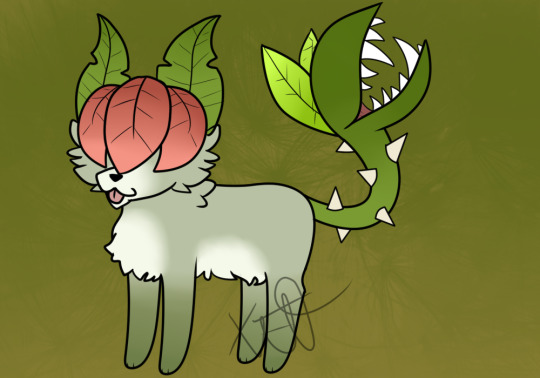
Necalli
He is a overprotective but sweet chihuahua Monster, but only with Xtabay, with others he is very aggresive and his barks can make a single pacworlder ears explode until leaving them deaf
#pacman and the ghostly adventures#pmatga#pac man and the ghostly adventures#my ocs#Xtabay#maya culture#yucatan#mexico#maya legend#legend
21 notes
·
View notes
Photo


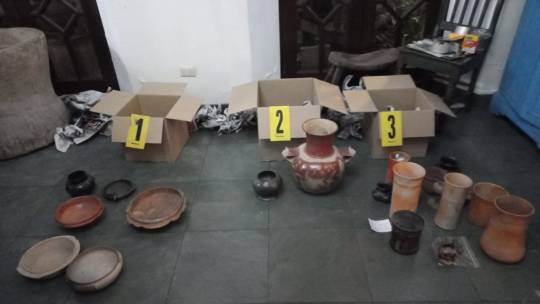
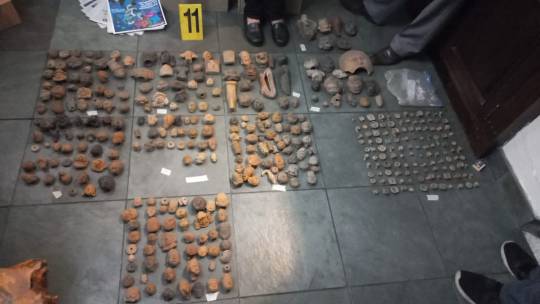
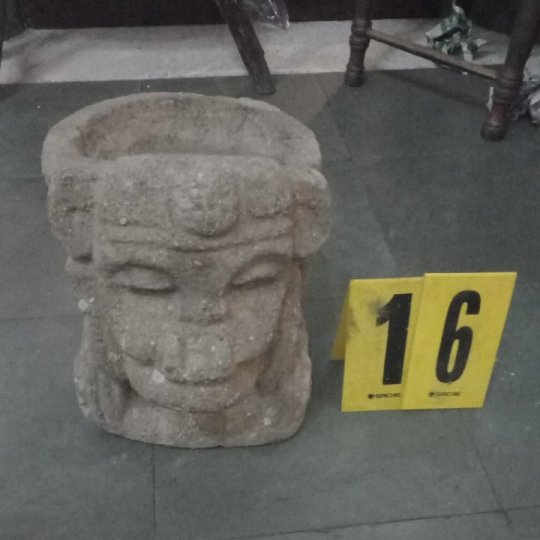

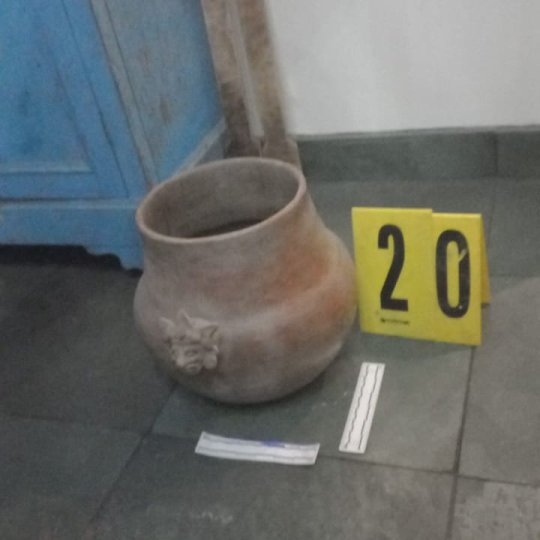
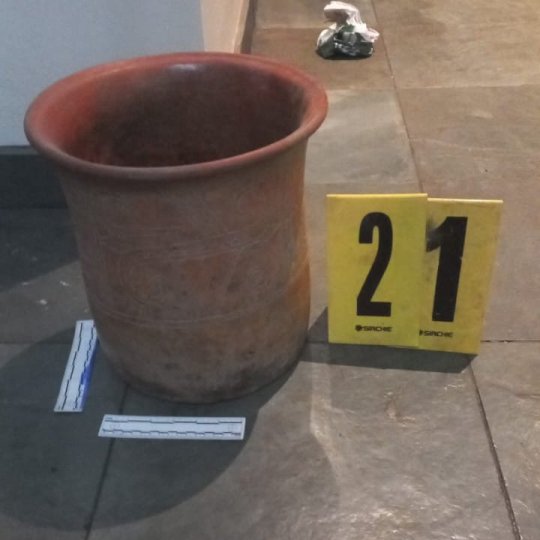

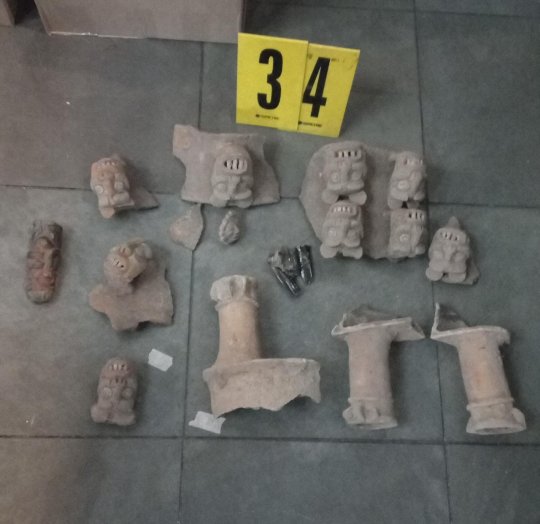
U.S. Citizens Arrested in Guatemala for Smuggling Ancient Mayan Artifacts
A raid of the couple's home uncovered archaeological objects, and significant works in jade and basalt.
An American ex-pat couple in Guatemala is facing charges of smuggling historic artifacts—which could mean five to 10 years in prison if convicted.
Stephanie Allison Jolluck first fell under suspicion on November 10, when she was stopped at Guatemala City airport, the Associated Press reported. Her luggage was quite heavy, triggering an inspection. Inside, officials found two large Maya stone carvings, dating to 600 and 900 C.E. Jolluck claimed to have purchased them at a market in Antigua, where she lives.
It now appears that those sculptures were just the tip of the iceberg. Three days later, police stopped Jolluck in her car, and found 166 more historic artifacts. (A judge had already released her from custody.)
Jolluck was with another American, Giorgio Salvador Rossilli, and both claimed the artworks were worthless reproductions. (Rossilli also claimed that he had restored some of the artifacts found in their car for their owner, and had been returning them when he was arrested.)
“They argued that, because they are foreigners, they cannot tell one piece from another,” prosecutor Jorge Alberto de León told the AP. “They told the judge that because they were pieces of stone they had seen sold at the markets, they never imagined that they were ancient archeological pieces.”
Guatemala’s Culture Ministry begged to differ, finding 90 percent of the objects to be Pre-Hispanic originals. The country believes the couple is operating a network for the illicit trafficking of Maya artifacts and other cultural heritage.
Nonetheless, Judge Sherly Figueroa released Jolluck and Rossilli on $6,400 bail on Monday, prohibiting them from leaving the country and requiring a biweekly check-in with prosecutors.
Then came the raid of their home, conducted by the Office of the Prosecutor for Crimes against the Cultural Heritage of the Nation. The search turned up an astonishing 1,222 archaeological artifacts, 722 significant works in materials such as jade and basalt, as well as 500 smaller pieces.
Other objects seized by the police include computers, books, and a vibrantly colored stuffed bird that may be a quetzal. The General Directorate of Cultural and Natural Heritage of the Ministry of Culture and Sports has taken custody of the artifacts for analysis, according to the nation’s Ministerio Público.
Jolluck, age 49, is a photographer and designer, while the AP described 62-year-old Rossilli as “a connoisseur of Mayan [sic] folk art.” She wrote on her website that she “has always been fascinated by Indigenous cultures. As a lover of ethnographic art, antiques, and handicrafts, I enjoy shopping markets around the world.”
By Sarah Cascone.
#U.S. Citizens Arrested in Guatemala for Smuggling Ancient Mayan Artifacts#looting#smuggling#crime#ancient artifacts#archeology#archeolgst#history#history news#ancient history#ancient culture#maya culture#maya history#mayan artifacts
15 notes
·
View notes
Text
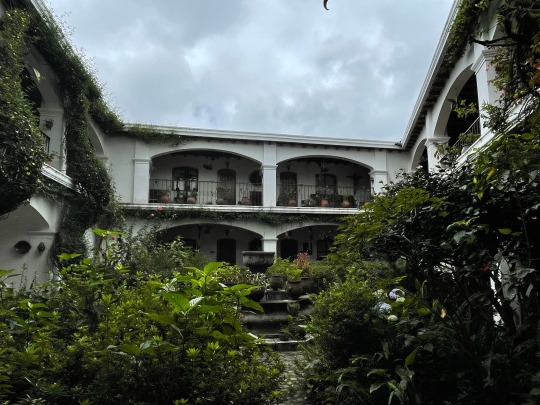
Hotel Santo Tomas, Chichicastenango, 2022
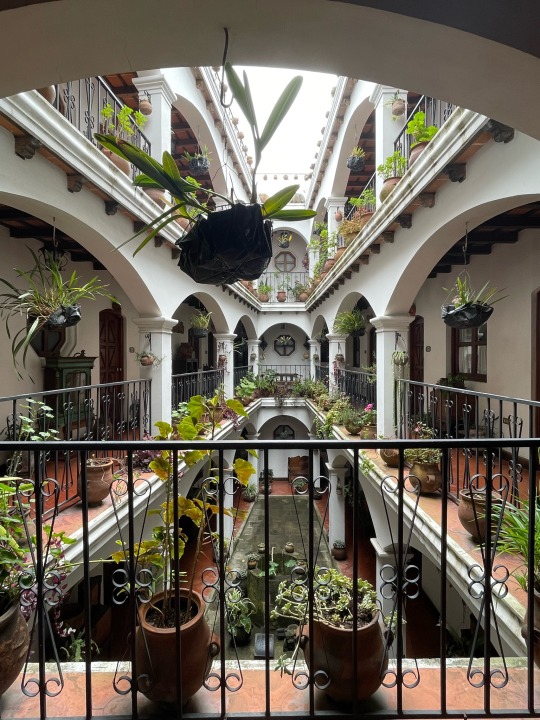

2 notes
·
View notes
Text
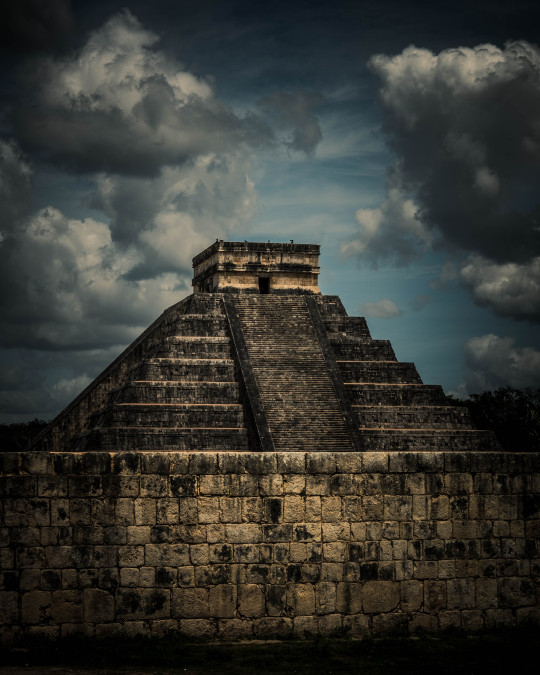
Moody Chichén Itzá, México
#chichenitza#mexico#vacation#traveling#photography#travelphotography#yucatan#mexicolove#wanderlust#fernweh#mexiko#photooftheday#beautiful#moodyphotography#dark tones#history#architecture#museum#maya civilization#maya culture#mayanculture#mayan civilization
6 notes
·
View notes
Text
The Kaqchikel Language and Culture in Guatemala
Unveiling the Kaqchikel Language: Guatemala`s Indigenous Maya Treasure
The colourful tapestry of Guatemala is woven with threads of numerous indigenous cultures, every contributing its particular shades to the wealthy cultural historical past of the nation. Among these, the Kaqchikel language stands as a shimmering gem, spoken through the indigenous Kaqchikel Maya humans and representing…

View On WordPress
0 notes
Text




Donatella Versace and Maya Rudolph in 2002
#donatella versace#maya rudolph#versace#2002#celebrities#iconic#pop culture#hollywood#fashion#movies#2000s#2000s nostalgia#2000s aesthetic#2000s fashion#2000s icons#2000s tv#2000s style#2000s movies#early 2000s#2000s core#2000s internet#snl#00s#00s fashion#2000s cinema#fashion designer#actress
1K notes
·
View notes
Text





Zona arqueológica de Mayapán
Yucatán, diciembre 2019
#mexico#méxico#yucatan#yucatán#maya#mayas#maya culture#arqueologia#arqueology#ancient ruins#beautiful ruins#old ruins
8 notes
·
View notes
Text
AXIS MUNDI AND COLOSSAL HEADS
written: 2 october 2022 - 10 october 2022
[disclaimer: this specific entry is actually a paper i wrote for my art of latin america class. so it would be a little different from what my previous entries are. i would say this is a well written paper considering the grade i received. my professor made comments that i will take into consideration for the next time i write my paper, anyways.... here is axis mundi and colossal heads.]
the term veracruz usually seems to be in the air when referring to or talking about cultures in mesoamerica. as more things were uncovered, archeologists and possible art historians began categorizing the the specific names and tied them with their material culture. the first "mother culture" or "sister culture" was introduced upon learning. the olmec civilization was referred to as the "mother culture" or "sister culture;" however, as far as the learning process goes, and the anthropological meaning and difference between the two, was the olmec civilization a site that genuinely revolutionized the beginning of mesoamerica cultures? before the maya culture, there were the olmecs. "olmeca" is referred to as the "rubber people," symbolizing people who inhabited the "jungle country of the gulf coast" (coe 58). the olmecs were one of the earliest large settlements out there during their time, and a couple of sites that will be discussed are san lorenzo and la venta. although there is much to talk about with the start of their civilization, the main focus will be material culture and how it resonated with the foundation of the different cultures in mesoamerica. the two main concepts that progressively show throughout the olmec civilization are the axis mundi and the colossal heads with their symbolic meanings.
a type of cosmovision that is important to the culture of mesoamerica is the axis mundi, as known as the center of the world. the axis mundi is the fifth direction of the cosmovision, and it comes in many different shapes and forms. as learned in class, altar 4 from the olmec pre-classic site of la venta is one of the main axis mundis because of its function and symbolic meaning. although not depicted well in the la venta powerpoint, four corncobs surround the person in the middle. the four corncobs represent the four directions; north, south, east, and west, making the person in the middle the essential direction: the center. the person in the center of the altar can be addressed as a royal or high-status member because of the specific ball game helment he is wearing (ellsworth notes from jhanella mae). the figure wearing the ball game helmet signifies that the person is a warrior. mesoamerican cultures commonly associate themselves with the underworld as they believe there are three worlds: the heavens, earth, and the underworld. as the viewers can see, he is emerging from the cave. the cave that he emerges from is the portal to the underworld. in this case, he is coming out of the underworld and onto Earth. the heavens are depicted through the thick sky band on top of the altar. not only that but to the bottom of the altar is a twisted band that symbolizes the sense of motion. the band will always let the viewers know that the world will keep moving.
as archeologists surveyed more of the olmec site, they found well-preserved colossal heads. coe describes the colossal heads as “portraits of mighty rulers, with flat-faced, thick-lipped features,” which may sound unsettling but clearly expressed (coe 68). he also mentions wearing “helmet-like headgear that probably served as protection in both war and in the ceremonial game played with a rubber ball throughout mesoamerica,” which is similar to the la venta altar 4 because of the ball game helmet (coe 69). these large colossal heads were deeply buried throughout san lorenzo’s site and dated back to the early formative period (coe 68-69). the large colossal heads were made from basalt rock which can only be found near a volcano; this means that the olmec people dragged the massive basalt rock more than 50 miles north to get to their site in san lorenzo (coe 68). the colossal heads have different ball game helmets identifying their different rules during their time. their helmet could have anything from a jaguar paw to multi-drilled beads (coe 68-69). although not depicted in coe’s book, some colossal heads have destroyed mouths and noses. they create the colossal heads for the rulers to channel their power; however, once they pass away, they purposely destroy the moth and nose for the power to follow them to the afterlife. a website was posted on the key olmec sites powerpoint to understand and see the different helmets on the colossal heads. not only did the website show where each colossal head was found, but it also showed the size difference between each head.
to consider the olmec site as one of the first cultures in mesoamerica is establishing. although not as significant as la venta altar 4 and the colossal heads, honorable mentions found at the sites of an olmec civilization include a stele that can depict anything about a ruler or monuments scattered throughout the site of la venta, signifying a burial or sacrificial site. nowadays, some people do not agree that altars are not altars; however, we cannot change history. la venta altar 4 will be part of history whether some agree with it. it is a cosmovision that represents the five directions of the universe. there are more statues with symbolic meanings to talk about; however, the olmec colossal heads are one statue that made its mark and significance to civilization that cannot be forgotten.
signing off: jhanella mae
(CITATIONS AFTER THE CUT)
Ellsworth, Kirstin. Lat Am 4, La Venta, September 2022 PowerPoint Presentation. Coe, Michael D. “The Formative Period: Early Civilizations.” Mexico: From the Olmecs to the Aztecs, Thames & Hudson, 2019, pp. 57–102.
#axis mundi#mesoamerica#san lorenzo#la venta#olmec#la venta altar 4#colossal heads#archeologists#pre-classic#veracruz#mother culture#sister culture#maya#maya culture
0 notes
Text

some maya illustrations inbetween assignments!!
the froggy vase is def not maya but the others are from maya vases and plates. looove the wild boar and deer!!! im not sure what the discs are but i imagine a maya teenager in the year 1200 listening to some LPs <3
1 note
·
View note
Photo



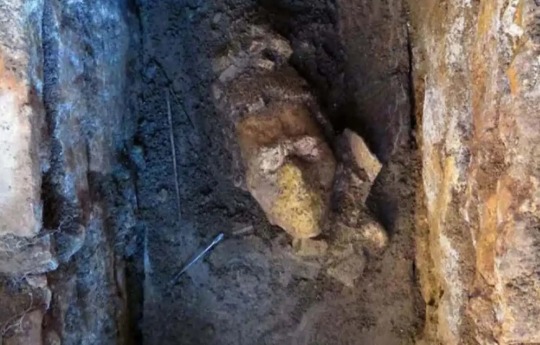


A 1,300-Year-Old Maya Maize God Sculpture Unearthed in Mexico
Archaeologists from the Instituto Nacional de Antropología e Historia (INAH) have discovered a stuccoed stone head of a Maya god associated with maize.
The team were excavating in the Maya city state of Palenque, located near the Usumacinta River in the Mexican state of Chiapas.
Palenque, also known as Lakamha in the Itza Language (meaning “Flat-Place-River”), is mostly known for having some of the finest architecture, sculpture, roof comb and bas-relief carvings from the Maya world.
The team were conducting restoration works as part of a project funded by the Department of State for Cultural Preservation. Whilst removing the fill from a corridor connecting House B and House F in the palace complex, the researchers found a receptacle which contained a severed stucco head deposited in a small pond.
The researchers believe that this environment was to emulate the entrance to the Maya underworld. The Maya believed that the universe was divided into the sky, the earth and the underworld, in which venerated sites such as caves and cenotes functioned as a portal or gateway to Xibalba, a subterranean realm ruled by the Maya death gods and their helpers.
The sculpture, originally conceived as a severed head, would have been placed by the Maya on a tripod (evidenced by the discovery of a ceramic tripod) and was positioned in an east-west orientation to symbolise the birth of the corn plant with the first rays of the sun.
Similar iconography can be found in sites from across the Tikal region from the Late Classic period (AD 600-850 and the Early Classic Period (AD 150-600), and in representations in the Dresden and Madrid codices where deities appear with their heads severed.
INAH Chiapas Centre researcher Arnoldo González Cruz said: “The discovery allows us to further understand how the ancient Maya of Palenque relived the mythical passage about the birth, death and resurrection of the maize deity.”
#A 1300-Year-Old Maya Maize God Sculpture Unearthed in Mexico#maya#archeology#archeolgst#ancient artifacts#ancient sculpture#history#history news#ancient history#ancient culture#ancient civilizations#Maya history#Maya culture
47 notes
·
View notes


